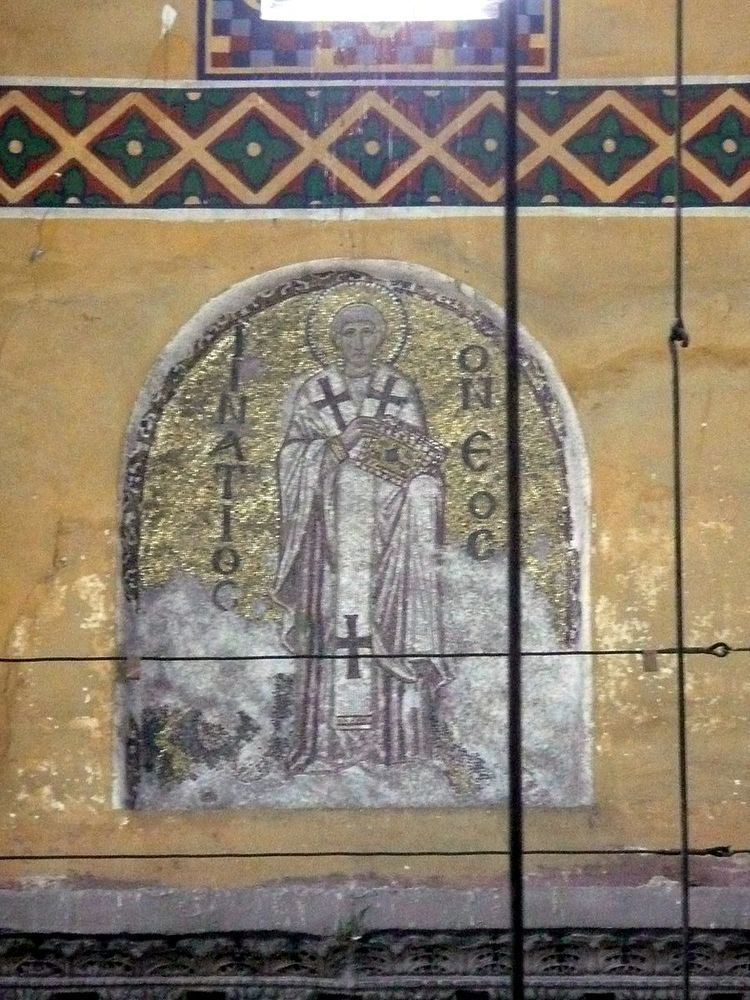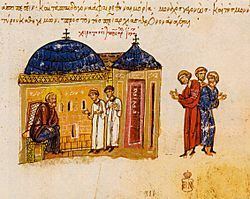Canonized Pre-congregation Parents Michael I Rangabe | Name Ignatios Constantinople Feast October 23 | |
 | ||
Died October 23, 877 AD, Constantinople Similar People Michael I Rangabe, Gregory V of Constantinople, Leo V the Armenian, Selim III, Constantine XI Palaiologos | ||
Grandparents Theophylact Rhangabe | ||
St. Ignatius or Ignatios (Greek: Ιγνάτιος), (c. 798–877) was a Patriarch of Constantinople from July 4, 847, to October 23, 858, and from November 23, 867, to his death on October 23, 877. In the Roman and Eastern Christian Churches, he is regarded as a saint, with a feast day of October 23.

Ignatios, originally named Niketas, was a son of the Emperor Michael I Rangabe and Prokopia. His maternal grandfather was Nikephoros I.
Although he was still a child, Niketas had been appointed nominal commander of the new corps of imperial guards, the Hikanatoi. He was forcibly castrated (and thus made ineligible for becoming emperor, since the emperor could not be a eunuch) and tonsured after his father's deposition in 813. He founded three monasteries on the Princes' Islands, a favourite place for exiling tonsured members of the imperial house.
The Empress Mother Theodora appointed Ignatios, a staunch opponent of Iconoclasm, to succeed Methodios I as patriarch of Constantinople in 847. Ignatios soon became embroiled in the conflict between the Stoudites and the moderates in the Church, the issue being whether or not to depose clergymen who had cooperated with iconoclast policies in the past. Ignatios took the side of the conservative Stoudites and deposed the archbishop of Syracuse, Gregory Asbestas, the leader of the moderate party. Asbestas appealed for redress to Pope Leo IV and thus inaugurated a period of friction in relations between the Roman and Constantinopolitan churches.
A fervent critic of the Caesar Bardas, Ignatios lost support after Emperor Michael III and Bardas removed Theodora from influence in 857. Ignatios was forced to resign and was replaced by the layman Photios. When Photios reversed some of his predecessor's policies, Ignatios's supporters appealed to Pope Nicholas I, who at first tried to stay out of the controversy, but then condemned Photios. The immediate issues in the conflict were the question of papal precedence over the patriarch, and jurisdiction over newly converted Bulgaria.
In 867 Basil I the Macedonian usurped the throne and, seeking an alliance with Nicholas I and Louis II, Holy Roman Emperor, banished Photios and restored Ignatios on the patriarchal throne. Reinstated, Ignatios refused to yield to the papacy and drew Bulgaria back into the orbit of the Byzantine Church in 870. Since Ignatios and Photios pursued the same policy, the latter was recalled and reinstated as tutor to the emperor's children. When Ignatios died in October 877, Photios was reinstated as patriarch and contributed to Ignatios' sanctification.
